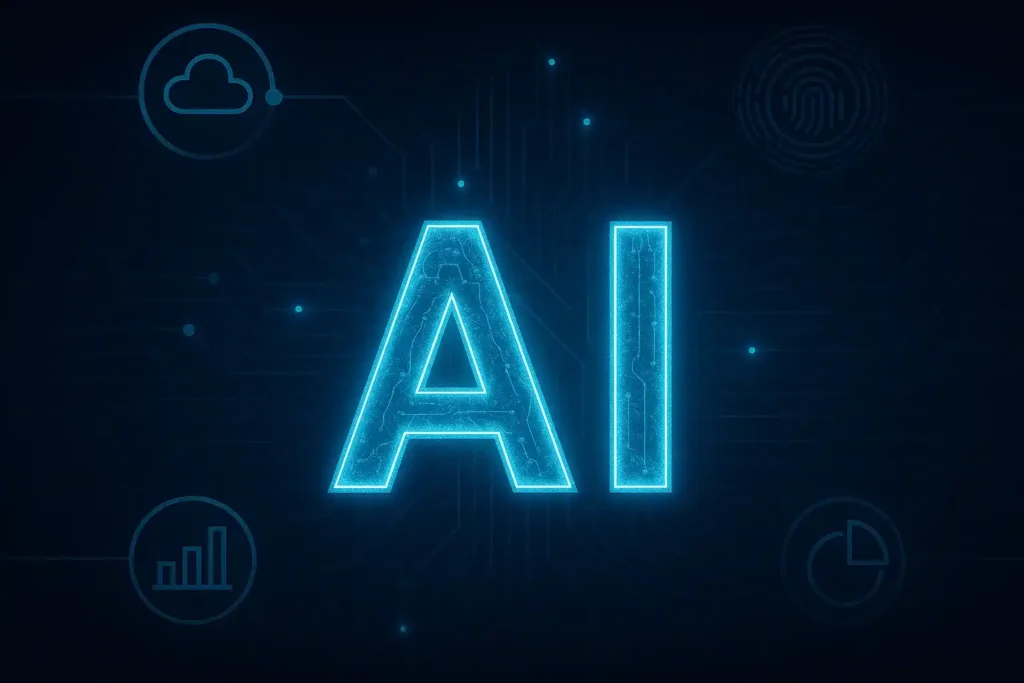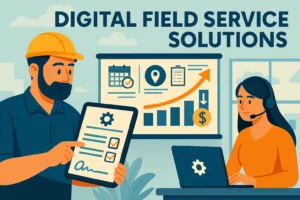AI is everywhere. But let’s be real — a lot of “AI terms” out there are just buzzwords tossed into pitch decks and product pages. If you’ve ever felt overwhelmed by acronyms like AGI, LLM, or A2A, you’re not alone.
This guide breaks it all down in plain English. No jargon. No fluff. Just the essentials that actually matter in 2025 and beyond.
Whether you’re in HR, IT, marketing, operations, or just trying to sound smart at your next meeting, this is your crash course. Save it. Share it. Bookmark it. Let’s decode AI terms together — and learn how to use them to actually get things done.
Why AI Terms Even Matter in 2025
AI is no longer a tech experiment. It’s the engine behind your scheduling tools, hiring workflows, analytics dashboards, and Slack alerts. Yet most people still don’t speak the language.
Here’s why knowing AI terms matters:
You’ll spot hype from real value.
You’ll make smarter decisions when evaluating vendors.
You’ll finally understand how your tools work.
You’ll collaborate better with developers and tech teams.
Real example:
An HR team bought an “AI chatbot” to automate hiring. It turned out to be a glorified contact form with no NLP, no automation, and no integration. Why? They didn’t understand the terms.
The Only AI Terms You Actually Need to Know
Let’s start with the core concepts you’ll encounter most.
AI Agent
A system that perceives, decides, and acts toward a goal. It doesn’t need manual input to move — it takes initiative. Think of it as a tireless digital assistant.
Agentic AI
An AI that can set its own goals and act without constant instructions. It learns as it goes, optimizing outcomes over time. Example: scheduling shifts and resolving conflicts autonomously.
A2A (Agent-to-Agent)
A communication protocol that lets independent AI agents collaborate. Your scheduling AI could talk to a payroll AI to sync hours, overtime, and compliance.
AGI vs ANI
AGI
(Artificial General Intelligence)
A still-hypothetical form of AI that can learn and reason like a human. It doesn’t exist yet, but it dominates headlines.
ANI
(Artificial Narrow Intelligence)
Real-world AI that specializes in one task — like scheduling, facial recognition, or translation. This is the AI you’re using today.
AI Chatbots: Beyond Small Talk
Modern AI chatbots can:
Answer HR questions
Handle PTO requests
Provide onboarding instructions
Act as 24/7 support agents
Tools like ChatGPT, Claude, Gemini, and custom bots trained on internal docs can be deeply useful.
Automation vs Orchestration
AI Automation
Handles specific, repetitive tasks — like labelling tickets, assigning shifts, or sending alerts.
AI Orchestration
Connects systems and tasks into end-to-end flows. Think: onboarding a new hire, setting their shift pattern, syncing payroll, and sending compliance docs.
AI Models & Families
AI Model
The core algorithm trained to map input to output. GPT-4o, Claude 3, and Gemini 1.5 are examples.
Model Family
A group of related models trained on similar architecture but optimized for different tasks. GPT-3.5, GPT-4, GPT-4o are all in the GPT family.
Alignment, Attention & Bias
Alignment
Ensures AI behaviour matches human values. Poor alignment = unintended actions.
Attention
How models “focus” on the most important data to generate responses. Core to transformer models.
Bias
If training data is biased, the AI’s output will be too. This matters for HR, compliance, and decision-making.
AI Integration
Use platforms like:
Zapier to trigger actions between apps
APIs to embed AI features
No-code tools to build smart automations without dev time
Example: Use ChatGPT to generate shift reports inside Shifton based on time tracking data.
Advanced AI Terms You’ll See More Of
LLM (Large Language Model)
The powerhouse behind chatbots, content generation, and smart replies. LLMs are trained on massive text datasets and can perform a wide range of language tasks.
Popular LLMs:
GPT-4o (OpenAI)
Claude 3 (Anthropic)
Gemini 1.5 (Google)
Mistral (open-source)
RAG (Retrieval-Augmented Generation)
Combines a language model with a search engine or document base to generate real-time, context-aware responses. Useful for AI support agents and knowledge bases.
Zero-shot / Few-shot Learning
Zero-shot: AI does something with no examples.
Few-shot: AI uses a few examples in the prompt to learn how to perform a task.
These skills allow AI to adapt fast — great for analyzing new trends in support tickets or HR feedback.
Multimodal AI
Models that understand text, images, audio, or video all at once. Great for interpreting visual schedules, voice commands, and form inputs together.
Vector Databases
Stores information in a format AI can understand and search semantically (by meaning, not keyword). Powers document search, chatbots, and personalization.
Popular tools:
Pinecone
Weaviate
Chroma
Full Glossary of 40+ AI Terms (Explained Simply)
AI agent — A system that can make decisions and act toward goals without human micromanagement.
Agentic AI — AI that sets its own goals and takes initiative based on its environment.
A2A (Agent-to-Agent) — A protocol for AI agents to communicate and collaborate.
AGI (Artificial General Intelligence) — A hypothetical AI with human-level learning and reasoning.
ANI (Artificial Narrow Intelligence) — Real-world AI that excels at one specific task.
AI model — A trained function that turns input into intelligent output.
Model family — A group of related AI models built from the same architecture.
LLM (Large Language Model) — A model trained on large-scale language data to understand and generate human-like text.
Multimodal AI — AI that can understand and work with multiple input types (text, image, voice).
Vector database — A type of database used to store and search data based on meaning, not just keywords.
Embeddings — Numeric representations of text/data that help AI understand relationships and meaning.
RAG (Retrieval-Augmented Generation) — Combines real-time search with generation for more accurate answers.
Prompt engineering — Crafting better inputs to get desired outputs from AI.
Zero-shot learning — AI performs a task without having seen it before.
Few-shot learning — AI learns a new task with just a few examples.
Fine-tuning — Adapting a general model to a specific task or dataset.
Pretraining — The initial training phase of an AI model on a broad dataset.
Hallucination — When AI confidently generates false or incorrect information.
Bias — Systematic unfairness in AI behaviour due to skewed training data.
Alignment — Making sure AI outputs match human goals, values, and ethics.
Constitutional AI — Training models using built-in ethical principles.
Explainability — The ability to understand why AI made a certain decision.
Black box — A model or system whose internal workings are not transparent or interpretable.
Chain-of-thought reasoning — A technique where AI explains its steps before reaching a conclusion.
RLHF (Reinforcement Learning from Human Feedback) — A training method where human preferences guide the learning process.
Synthetic data — Artificially generated data used to train or test models.
Open weights — When a model’s parameters are shared publicly (open-source).
Closed model — A proprietary AI model whose internals are not accessible.
Token — The smallest unit of text AI models use (often a word or part of a word).
Latency — The time delay between a user input and AI response.
Inference — The act of using a trained model to generate output.
Grounding — Linking AI outputs to real, verifiable information.
Autonomous AI — AI that can operate independently over long sequences without intervention.
Benchmarking — Testing AI performance using standardized datasets and tasks.
Guardrails — Restrictions or limits set on AI to prevent misuse or error.
Tuning knobs — Adjustable settings that change how an AI model behaves.
Scalability — How well an AI system performs as user demand increases.
Overfitting — When a model performs well on training data but poorly in the real world.
Generalization — The ability of AI to perform well on unseen data.
NLP (Natural Language Processing) — The field of AI focused on understanding and generating human language.
Data labelling — Tagging raw data (images, text, etc.) to teach AI what it’s seeing.
Self-supervised learning — Training AI to learn patterns from unlabeled data.
Co-pilot AI — A type of assistant AI that augments rather than replaces human workers.
Orchestration — Connecting AI-powered tools into smart, automated workflows.
Real Use Cases Across Teams
HR:
AI predicts burnout risk
Generates onboarding plans
Flags labour law violations
Ops:
Predict shift coverage problems
Forecast inventory and demand
Optimize delivery routes
Marketing:
Summarize campaign performance
Write variations of ad copy
Personalize content by user segment
Support:
Triage tickets by urgency and sentiment
Summarize call logs
Suggest resolutions automatically
How to Stay Ahead Without Knowing Everything
You don’t need to memorize every term. Just know enough to:
Ask the right questions
Spot BS in vendor pitches
Automate workflows confidently
Tips:
Follow a few AI newsletters (like the Shifton Blog)
Set alerts for product updates
Test small — then scale what works
Final Words: Let’s Keep It Real
Yes, there are hundreds of AI terms floating around. But most of them won’t change your workday. These ones will.
Now that you’ve got the language, use it. Start improving processes. Test tools. Automate the boring stuff.
Let AI do the heavy lifting. You handle the human part.
✅ Call to Action
Start Using AI in Your Workforce Management Today
Explore how Shifton’s AI-powered scheduling, time tracking, and automation tools can take your operations to the next level.👉 Discover Shifton →

 English (US)
English (US)  English (GB)
English (GB)  English (CA)
English (CA)  English (AU)
English (AU)  English (NZ)
English (NZ)  English (ZA)
English (ZA)  Español (ES)
Español (ES)  Español (MX)
Español (MX)  Español (AR)
Español (AR)  Português (BR)
Português (BR)  Português (PT)
Português (PT)  Deutsch (DE)
Deutsch (DE)  Deutsch (AT)
Deutsch (AT)  Français (FR)
Français (FR)  Français (BE)
Français (BE)  Français (CA)
Français (CA)  Italiano
Italiano  日本語
日本語  中文
中文  हिन्दी
हिन्दी  עברית
עברית  العربية
العربية  한국어
한국어  Nederlands
Nederlands  Polski
Polski  Türkçe
Türkçe  Українська
Українська  Русский
Русский  Magyar
Magyar  Română
Română  Čeština
Čeština  Български
Български  Ελληνικά
Ελληνικά  Svenska
Svenska  Dansk
Dansk  Norsk
Norsk  Suomi
Suomi  Bahasa
Bahasa  Tiếng Việt
Tiếng Việt  Tagalog
Tagalog  ไทย
ไทย  Latviešu
Latviešu  Lietuvių
Lietuvių  Eesti
Eesti  Slovenčina
Slovenčina  Slovenščina
Slovenščina  Hrvatski
Hrvatski  Македонски
Македонски  Қазақ
Қазақ  Azərbaycan
Azərbaycan  বাংলা
বাংলা 

